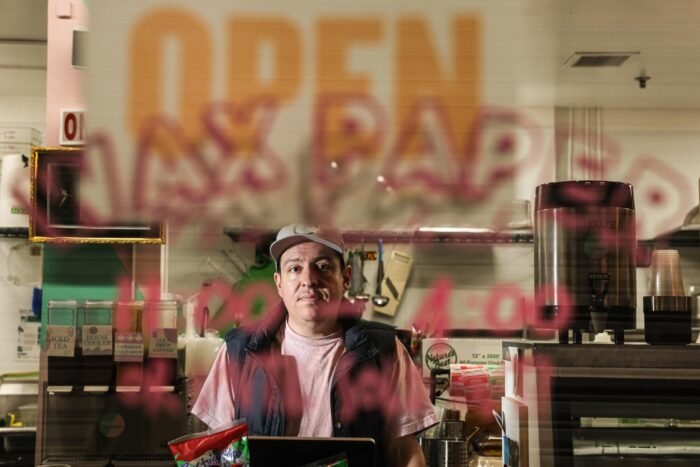In October, Lauren and Peter Lemos locked the doors of their Chinatown sandwich shop for what they thought would be the last time. Facing mounting debts and no profits, the couple saw no path forward. But in late March, they flipped Wax Paper’s lights back on—not due to newfound success but because they couldn’t afford to stay closed. In this article we talk about why Los Angeles Restaurant Industry in Crisis.
“We can’t even afford to close. We can’t afford to be open, we can’t afford to be closed,” said Lauren Lemos.
The Lemoses are hardly alone in this economic crisis engulfing Los Angeles restaurant industry. Interviews with over two dozen chefs, owners, policymakers and advocacy groups revealed deep concern over the future of the service industry, especially heading into 2024.
Last year saw entertainment strikes that rippled through the region’s restaurants; pandemic loans and rent coming due; and skyrocketing costs for ingredients, repairs, and more. High-profile closures included Nancy Silverton’s Barish, Walter and Margarita Manzke’s Petty Cash Taqueria, Daniel Rose’s Café Basque, and Jean-Georges Vongerichten’s eponymous Beverly Hills spot.
At one point, the Lemoses considered moving money between their struggling restaurants to keep them afloat. But with their Frogtown spot Lingua Franca also barely staying open, they knew that would only delay the inevitable.
“Costs are higher than ever, risks are higher than ever,” said Lauren. “I worry ‘is it going to be sustainable?’ I’m not sure we’ll have mom-and-pop restaurants much longer.”
And 2024 has already seen iconic establishments like the Manzkes’ Bicyclette and Patrick’s Roadhouse shut down. Franceso Zimone saw profits at his famous Italian pizzerias plummet from 20% to 2% last year. He managed to open a new location through bulk ordering and supply chain adjustments but remains anxious about the future.
So what is pushing this crisis over the edge?
Soaring Costs and Tight Margins
Chefs and owners noted ingredient and packaging costs have jumped anywhere from 35% to 50% over the past couple years. And vendors continue to steadily raise prices. Restaurants routinely resist passing full costs to diners, but there’s a breaking point.
“The margins are razor thin, the predictability is very low, and the chances of catastrophe are high,” said Uyên Lê of Silver Lake Vietnamese spot Bé Ù, who raised prices modestly for the first time in 18 months.
These cost spikes hurt at restaurants’ high volumes. Fluctuations in gas prices can also devastate bottom lines. Andy Kadin of Glassell Park bakery and deli Bub and Grandma’s saw thousands of dollars in extra delivery fees when gas topped $6 a gallon. He’s had to raise his own prices and is now considering third-party shipping.
Wholesale bakery sales to struggling restaurants also take a hit when those clients shut down. As Kadin notes, “It’s hard to track what else is eating up the cash.” Diversification through new offerings has become key to survival.
Minimum Wage Changes
Rising minimum wages offer hope of better livability but are kneecapping restaurants. California jumped to $16 an hour this January, with Los Angeles soon requiring $17.28. AB 1228 also boosted the minimum for fast food chains to $20, covering half a million workers statewide. Expect layoffs, higher prices, and more automation.
“Gas isn’t going down, rent isn’t going down,” said one Carl’s Jr. employee. Unions celebrated the change but operators cite “corporate greed” over small business struggles.
Long Beach recently passed a minimum wage hike for hotel workers up to $29.50 by 2028. According to one union, small businesses still supported the change. But restaurateurs in West Hollywood, with $19 hourly minimum, have cut hours and staff to manage.
No More Surcharges
Looming changes are also scrapping surcharges starting July 1st. Many restaurants used these “hidden fees” to balance pay or fund benefits between front and back of house staff. Now they must fold the percentages into menu prices.
“Every restaurateur who cares is using it responsibly,” said Ryan Bailey of pioneering restaurant Kato. The 18% surcharge funds healthcare, paid time off, and other benefits so employees can progress. Once banned, owners may cut programs or staff.
Restaurants like Jon and Vinny’s and Perch have faced lawsuits over surcharges. Operators urge lawmakers to provide clarity before the law takes effect, warning of legal exposure. Some are proactively raising prices instead so customers avoid confusion down the line.
Shifting Diner Preferences
Besides mounting costs, restaurants fight shifting preferences emerging from the pandemic. Chef David LeFevre said patrons investing in their homes now want to enjoy the upgrades. And they opt to spend on travel over local dining.
The hours people dine out also changed. “They don’t go out to dinner late,” said LeFevre. Reservations after 8 PM have halved compared to 2019. Outdoor dining bans severely impacted many as well, though programs like L.A. Al Fresco provided a lifeline.
Manhattan Beach actually voted to abruptly end parklets until backlash forced a review. LeFevre argues transitions need planning so restaurants can adapt. Through uncertainties, he remains hopeful and will soon debut a new Hermosa Beach seafood spot.
Can Mom-and-Pops Survive?
Despite optimism, the question looms if smaller restaurants can survive the punishing economic landscape. The Lemoses exemplify the despair of indie owners holding on. And each closure has a ripple effect across the local community and suppliers.
“They should first start from a place of doing no harm,” said industry association president Jot Condie about lawmakers. Red tape and regulations often appear disconnected from restaurants fighting to break even. Alleviating financial burdens could help more than adding them.
Ultimately, eateries fading away means losing vital gathering places, distinctive culinary voices, and diverse jobs. If solutions don’t emerge, LA risks becoming a food city of only chains. And locals like the Lemoses may not endure 2024. I sincerely hope you find this “Los Angeles Restaurant Industry in Crisis? Discover the Reasons” article helpful.

